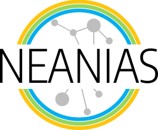The work “The Volcanic Relief within the Kos-Nisyros-Tilos Tectonic Graben at the Eastern Edge of the Aegean Volcanic Arc, Greece and Geohazard Implications“, with the support of NEANIAS project, has been published at MDPI/Geosciences.
"The Volcanic Relief within the Kos-Nisyros-Tilos Tectonic Graben at the Eastern Edge of the Aegean Volcanic Arc, Greece and Geohazard Implications".
- Authors: Paraskevi Nomikou [1], Pavlos Krassakis [2], Stavroula Kazana [1], Dimitrios Papanikolaou [1] and Nikolaos Koukouzas [2].
- Affiliations: [1] Department of Geology and Geoenvironment, National and Kapodistrian University of Athens, Panepistimioupoli Zografou, 15784 Athens, Greece; [2] Centre for Research & Technology Hellas (CERTH), 15125 Athens, Greece.
Abstract
The active Kos-Nisyros-Tilos volcanic field is located in the eastern sector of the Aegean Volcanic Arc resulting from the subduction of the African plate beneath the Aegean plate. The volcanic activity is developed since Middle Pleistocene and it occurs within a tectonic graben with several volcanic outcrops both onshore and offshore. Data obtained from previous offshore geophysical surveys and ROV exploration, combined with geospatial techniques have been used to construct synthetic maps of the broader submarine area. The volcanic relief is analyzed from the base of the volcanic structures offshore to their summits onshore reaching 1373 m of height and their volumes have been computed with 24.26 km3 for Nisyros Island and a total volume of 54.42 km3 for the entire volcanic area. The volcanic structures are distinguished in: (1) volcanic cones at the islands of Nisyros (older strato-volcano), Pergousa, Yali and Strongyli, (2) volcanic domes at the islands of Pachia, East Kondeliousa and Nisyros (younger Prophitis Ilias domes), (3) submarine volcanic calderas (Avyssos and Kefalos). Submarine volcanic debris avalanches have been also described south of Nisyros and undulating features at the eastern Kefalos bay. Submarine canyons and channels are developed along the Kos southern margin contrary to the Tilos margin. Ground truth campaigns with submarine vessels and ROVs have verified the previous analysis in several submarine volcanic sites. The geohazards of the area comprise: (1) seismic hazard, both due to the activation of major marginal faults and minor intra-volcanic faults, (2) volcanic hazard, related to the recent volcanic structures and long-term iconic eruptions related to the deep submarine calderas, (3) tsunami hazard, related to the seismic hazard as well as to the numerous unstable submarine slopes with potential of gravity sliding.
Acknowledgments
Seafloor mapping was a part of the GEOWARN project (Contract no: IST-1999- 12310). The European Commission is acknowledged for their financial contribution to the project. ROV exploration was supported by Institute for Exploration (IFE-USA) and the collaborative project “New Frontiers in the Ocean Exploration”. The authors would like to thank the officers and the crew of the R/V AEGAEO and E/V NAUTILUS for their effective contribution to the field work. This work has been [fully/partially] supported by NEANIAS, funded by the European Union’s Horizon 2020 research and innovation programme, under grant agreement No 863448. Maps and diagrams throughout this work were created using ArcGIS® software by Esri. ArcGIS® and ArcMap™ are the intellectual property of Esri and are used herein under license. Copyright © Esri. All rights reserved. We also thank Daniele Casalbore and two other anonymous reviewers whose comments improved the manuscript.
Keywords
multibeam bathymetry; seabed morphology; offshore morphotectonic map; submarine drainage; submarine volcanic edifice; mass movements; geohazards; hydrospatial
You can get the article at MDPI/Geosciences site.
